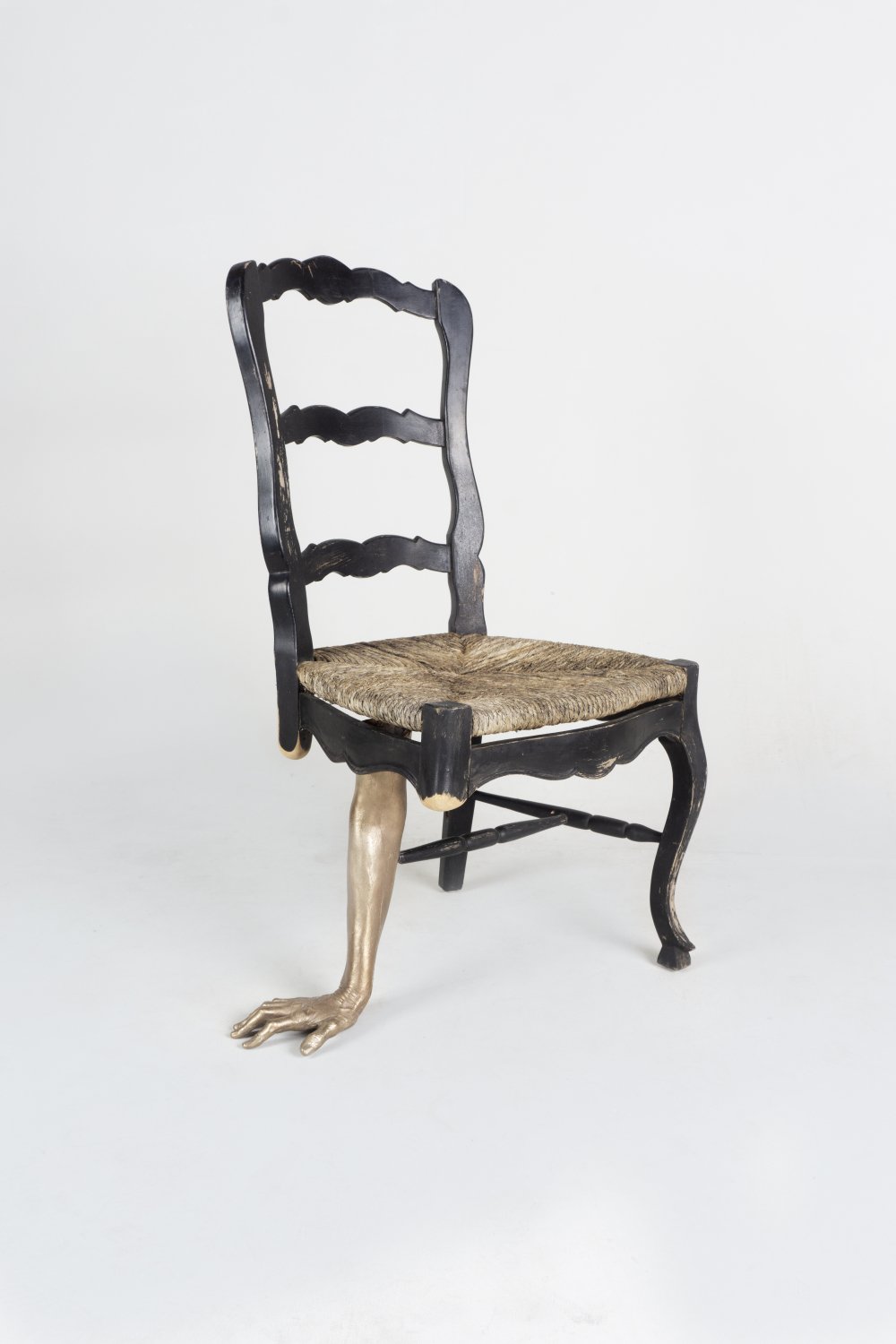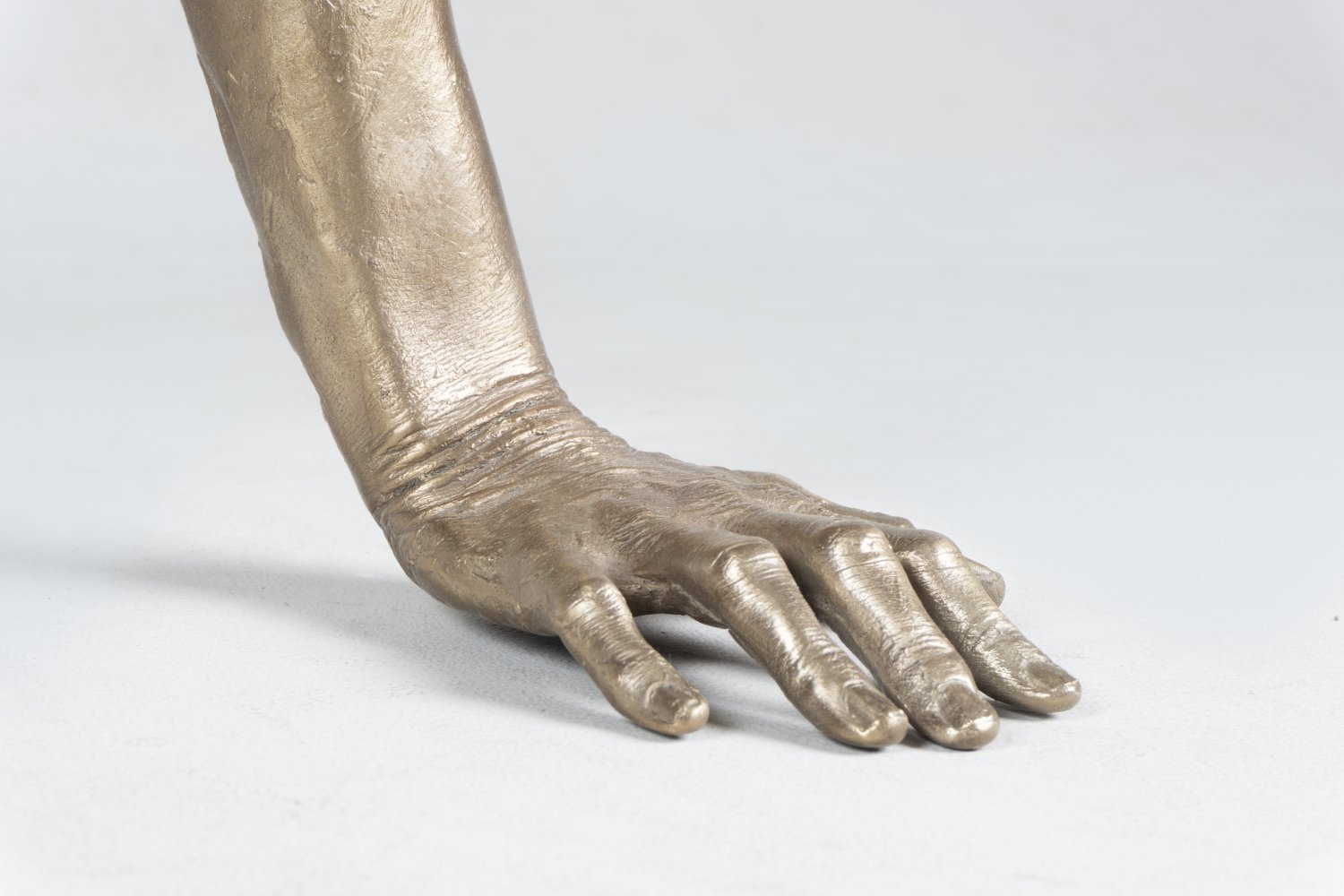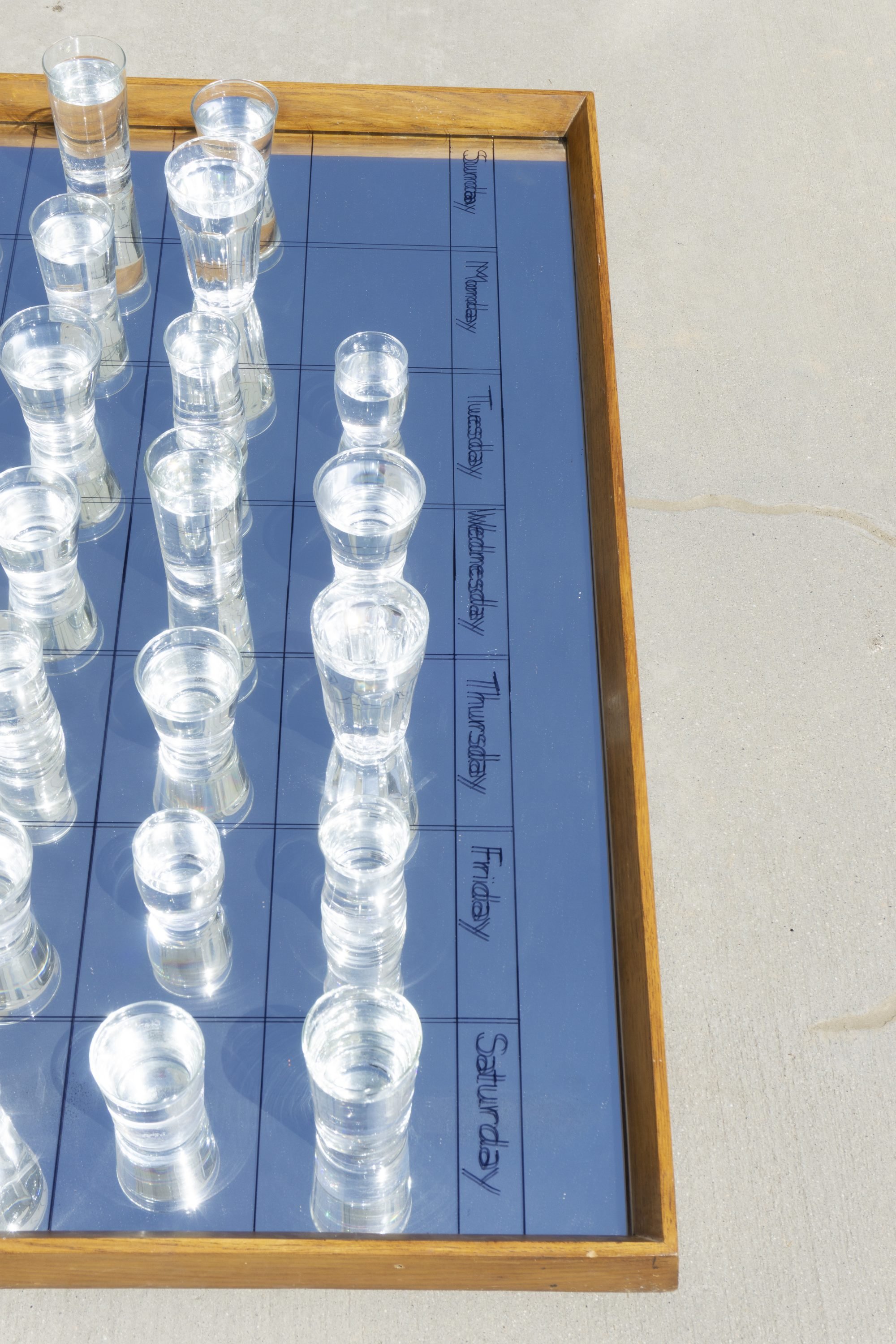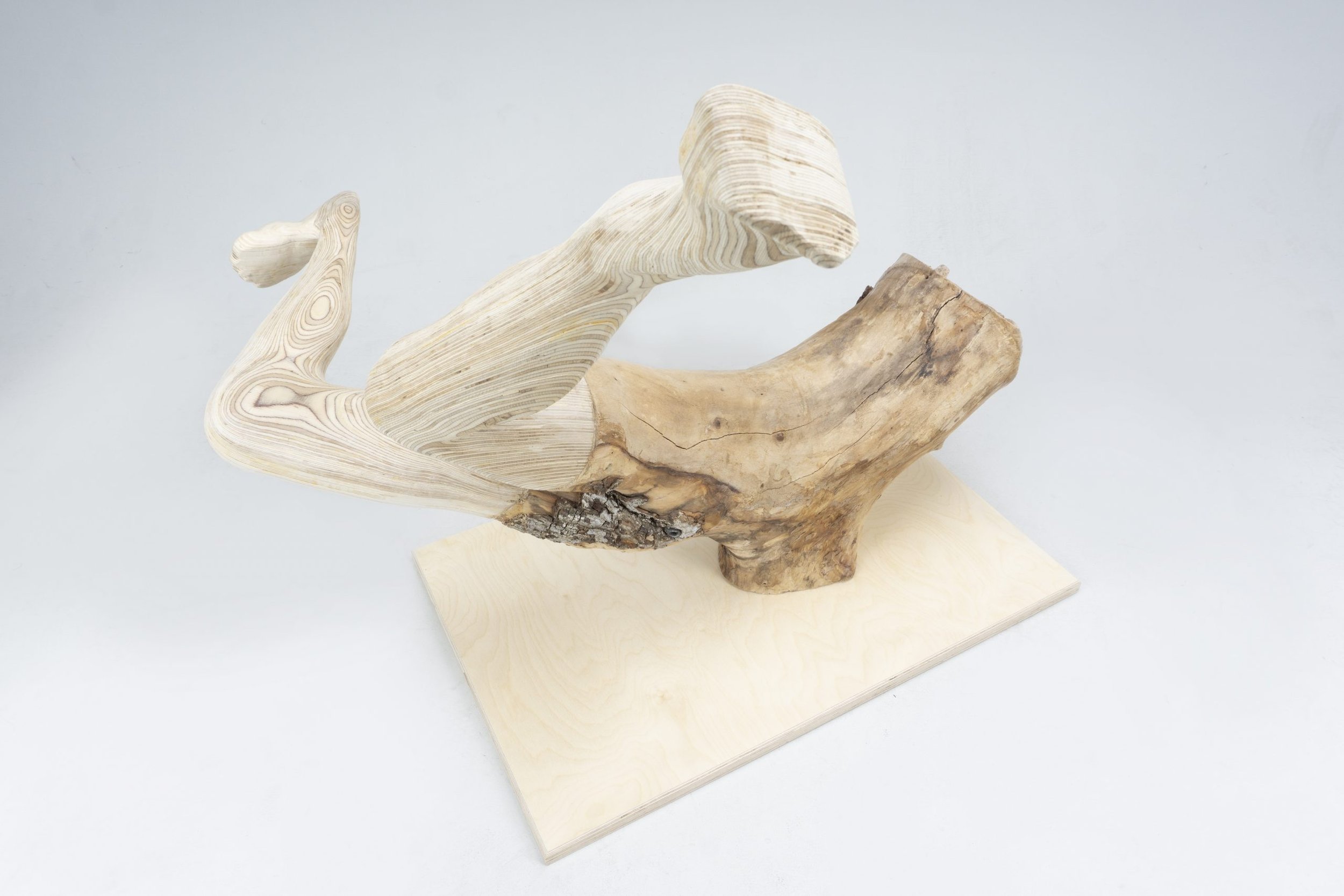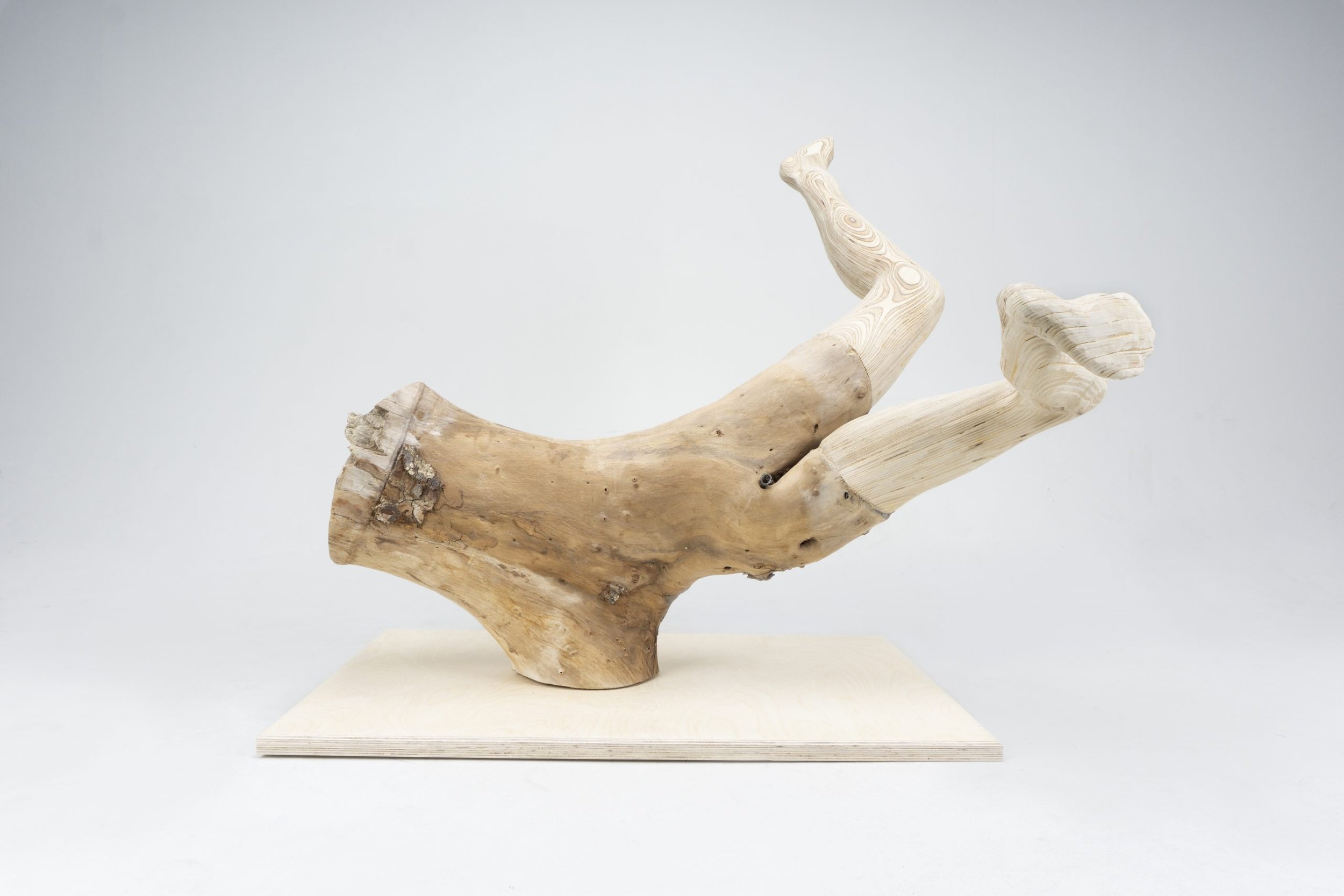
Stories I’m Telling Myself
MFA Thesis | 2020
Mom, 2020
Life-cast bronze, ladder-back chair
41” x 25” x 24”
Homage to mother: the parent who creates comfort for others at the expense of her own physical and mental wellbeing. She’d give her right arm for her family, her child. She sacrifices and is praised for her selflessness. All the while she fears her efforts are not enough, not appreciated, not noticed or valued. She never questions her belief that she must hold up and hold together everything and everyone else. She fears looking after herself and her own needs — because then she will look selfish.
The formal family portrait makes no effort to present the real, but rather documents a performed ideal. All efforts, at least on the part of those who initiate and schedule the archivable proof of their familial relationship, are to show the best face, the cohesive nuclear unit, a highly choreographed and stilted statement that
“This is us.”
At some level the point of the exercise is that the not-so-ideal reality of family can, for a few shutter-clicks of the studio camera, measure up to some dreamed of enough-ness.
Outside of the portrait, not-enough-ness is an unspoken dread that shapes life in the form of measuring marks. These marks look like comparison, competition, and criticism.
What happens if the marks of measure disappear? What becomes of a measuring cup that no longer measures?
Family Portrait, 2020
Glass measuring cups, polyvinyl chloride (PVC)
Dimensions vary
Swing: Learning the Cost of Self-Knowing & Pleasure, 2020
Metal pipe & tube, metal chain, wood, kiln cast glass, fiberglass insulation, cast soap, cardboard, cotton sheet, aluminum block
124″ x 85″ x 84″
Disoriented and stripped of their cabinet, two found drawers float off the wall. Strands of fabric, twine, and rope trail between the suspended boxes. An umbilical cord?
The suspended drawers cradle familiar objects. Thread, string, tape, buttons, screws, shower curtain rings, push pins, door knobs, glue, fishing line, bungee cord, rubber bands, padlocks, and more.
Kept. But for what? Future use? An afternoon of I-Spy? Or simply kept because the drawers and their contents are forgotten? After all, sorting and organizing the collection would require remembering, attention, and care.
Disorganized Attachment, 2020
Oak dresser drawers, mixed media
47″ x 46″ x 24″
With a sense of time evoked by lines for a month of days, the face of this large glass calendar nods to the daily importance of that which sustains life. Trust Me speaks to the experience of anyone who has longed for the quenching relief of an observation or comment free of comparison or criticism.
This installation is for anyone who needed the essentials: to be seen, heard, and valued. But who instead sipped daily shame for failing to compete well or meet expectations.
For anyone who has been told, “Stop complaining (being so needy, so sensitive, so fragile). This is how I treat all of my children/students/employees/lovers. The words and actions are the same for everyone. This is all you will get. Trust me.”
Trust Me, They’re All the Same, 2020
Mirror, 30 water glasses (varied size/shape), clear liquid
6″ x 43.5″ x 31.25″
What does it mean to be part of a family tree? What prompts the shape and direction of personal growth? Is our family tree where we find belonging? Or is this where the longing for belonging takes root in our souls? Is this where we long to know we are enough as we learn myriad strategies of fitting in?
Contorting, twisting, hustling, pleasing, hoping for acceptance based on terms we never fully grasp, rules and expectations that shift just as we think we might reach them.
When at last we accept that we are who we are, we learn to transform the materials that we have. We make what we can out of our experience, reflection, and the tenderness of choosing to belong fully to ourselves.
Family Tree, 2020
Plywood (baltic birch), tree stump
40″ x 42″ x 42″
Daily Sacrament: Communion With All Sinners and Saints, 2017-2020
Kiln cast glass, light box
8” x 86” x 3.5”
Through my work I examine memory and the stories we tell as we try to make sense of personal trauma—experiences that leave us feeling voiceless, powerless. How do we regain a sense of agency and power? Does the way we tell our stories matter? Is making art a method of participatory recovery, a way to find the humanity and power in our stories—the humor, awkwardness, bravery, shame, kindness, grief?
To explore these questions I revisit and reshape the stories, conscious and unconscious, that I told myself as a child: stories that confirmed I was unfriendable and would always be alone.
Bringing All My Girls Home is an experiment in rendering the internal as external, subverting the norm of disowning pain or becoming a victim and instead turning the past into a form of personal style and identity. I deconstruct and reconstruct my story and wear it: multiple images of my face from preschool through 8th grade. Each face a memory of isolation, confusion, and sadness.
Making and wearing the dress is an attempt to recognize and embrace my past selves, own all of my story through embodiment, and reclaim my personal power.
As researcher and writer Brené Brown notes, “When we deny our stories, they define us. When we own our stories, we get to write a brave new ending.”
Or, as Salman Rushdie posits, “Those who do not have power over the story that dominates their lives, power to retell it, to rethink it, deconstruct it, joke about it, and change it as times change, truly are powerless.”
Bring All My Girls Home (Dress/Performance), 2020
Digital print on jersey (organic cotton)


